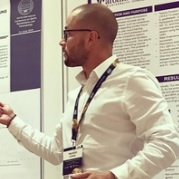Frontiers in Sport Performance, Health, and Fitness
A special issue of International Journal of Environmental Research and Public Health (ISSN 1660-4601). This special issue belongs to the section "Sport and Health".
Deadline for manuscript submissions: closed (28 February 2023) | Viewed by 15268
Special Issue Editors
Interests: training and testing; football; team sports; strength and conditioning
Special Issues, Collections and Topics in MDPI journals
Interests: heart rate variability; sleep quality; anxiety status; stressful events; physical activity; autonomic nervous system; predictive models
Special Issues, Collections and Topics in MDPI journals
2. Department of Biotechnology and Life Sciences, University of Insubria, Varese, Italy
Interests: breathing; disability; respiratorion; posture; motor control; obesity; physical activity
Special Issue Information
Dear Colleagues,
Sports performance, health, and fitness development and maintenance are interconnected aspects underpinning physical exercise.
In sports performance, practitioners should establish what the best interventions or strategies are to improve athletes (whether they are advanced or novices, adults or young, with or without disability) in the following domains:
- Technical–tactical: Analyzing the different gestures and movements intimately correlated with sport-specific performance in individual and team sport athletes, also in the transition from youth to adult context.
- Physical: Increasing the range of choices to refine practitioners’ decision-making ability on the use of the most suitable and appropriate interventions in order to bring improvements in biomotor qualities (e.g., muscle strength and power, speed, aerobic power and capacity, and flexibility) and body composition, and to reduce the risk of injuries.
- Cognitive: Providing additional information on the influence of cognitive function on physical performance during competitive events with the aim of helping athletes to maximize their outcomes when immersed in a highly stimulated (open skill sports) or poorly stimulated (closed skill sports) environment.
Being healthy and fit is vital to combat the adverse effects of urbanization and stress. As a matter of fact, a regular participation in physical exercise is associated with health-related benefits, particularly preventing chronic diseases such as obesity, diabetes, and conditions affecting the cardiovascular system for all age groups. Of note, a disease could include an impairment. A disability (physical or intellectual) is an alteration in normal body structures or function. Thus, for an individual with disability, it is important to explore health-related physical exercise solutions that can increase health, fitness, and cognitive wellbeing. In this sense, investigating the dose–response to physical exercise is required to better develop health and fitness of individuals with and without disabilities. This would also assist professionals in prescribing safe and effective physical exercise programs toward a better quality of life.
Therefore, the scope of the current Special Issue is to advance knowledge on the development of performance, health, and fitness with special emphasis on novel practical implications that could be exploited within a wide range of people.
Dr. Athos Trecroci
Dr. Alessio Rossi
Dr. Luca Cavaggioni
Guest Editors
Manuscript Submission Information
Manuscripts should be submitted online at www.mdpi.com by registering and logging in to this website. Once you are registered, click here to go to the submission form. Manuscripts can be submitted until the deadline. All submissions that pass pre-check are peer-reviewed. Accepted papers will be published continuously in the journal (as soon as accepted) and will be listed together on the special issue website. Research articles, review articles as well as short communications are invited. For planned papers, a title and short abstract (about 100 words) can be sent to the Editorial Office for announcement on this website.
Submitted manuscripts should not have been published previously, nor be under consideration for publication elsewhere (except conference proceedings papers). All manuscripts are thoroughly refereed through a single-blind peer-review process. A guide for authors and other relevant information for submission of manuscripts is available on the Instructions for Authors page. International Journal of Environmental Research and Public Health is an international peer-reviewed open access monthly journal published by MDPI.
Please visit the Instructions for Authors page before submitting a manuscript. The Article Processing Charge (APC) for publication in this open access journal is 2500 CHF (Swiss Francs). Submitted papers should be well formatted and use good English. Authors may use MDPI's English editing service prior to publication or during author revisions.
Keywords
- sport performance
- paralympic
- cognitive function
- actual motor competence
- training and testing







